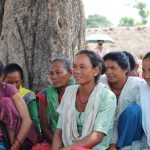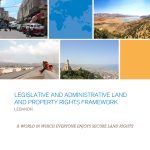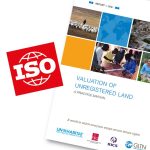- Version
- Download 134
- File Size 2.98 MB
- Create Date May 25, 2017
- Download
 DRAFTED: MARCH 2016
DRAFTED: MARCH 2016
GLII Working Paper No 5.
While tenure security in Africa needs to be addressed at many levels, this curriculum focuses specifically on enabling land practitioners (state and non-state actors) and national statistical offices to more effectively monitor and provide information on different forms of tenure at national and city level, so that they can more accurately advise on land policy. This is a critical component of improving land policy formulation and implementation in Africa because the information will enable governments and non-state actors to assess how land policies are being implemented over time. Secure tenure is not a one-size-fits-all concept
The absence of clear facts and figures on the status of different land tenure arrangements has hampered efforts to address long-term quests to provide adequate housing, improve agriculture production and promote economic opportunities for all in many African countries. Forced evictions and displacement often stem from poor knowledge of tenure arrangements. Similarly, this lack of information creates problems in ascertaining tenure security when undertaking development projects that potentially involved moving people or upgrading settlement sites.
A serious gap in addressing tenure security in Africa is created by the limited national legal and institutional framework to address land tenure security (now being addressed by frameworks such as the Voluntary Guidelines on the Governance of Tenure, the African Land Policy Initiative (LPI) and the Land Governance Assessment Framework (LGAF)) combined with the lack of capacity to manage land tenure issues, the lack of data and a lack of methodologies to monitor tenure security.
A necessary step towards increasing that security and improving policies to manage it is to enable land practitioners and statistical officers to assess the degree to which tenure rights are secured. Methodologies to collect and report on tenure security are not well vested in practices of land monitoring. The curriculum will ensure that key data generators and custodians are equipped with knowledge and know-how to measure security of tenure at three levels: individual or household, community or settlement, and legal and policy. With such capacity, participating institutions and individuals will realize that there is more than one way to achieve tenure security.







